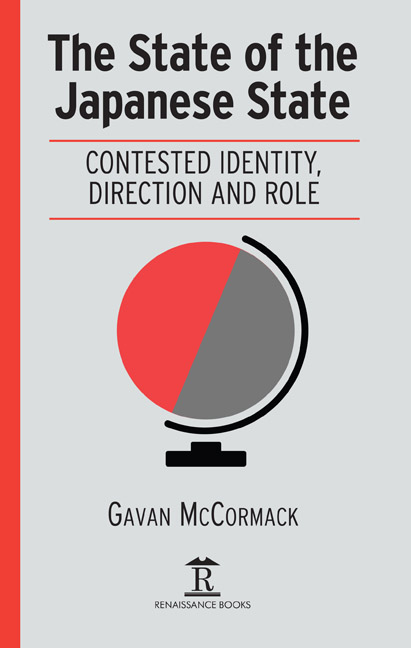Book contents
- Frontmatter
- Contents
- Preface
- Chapter 1 The Improbable Package
- Chapter 2 The Client State
- Chapter 3 The Client State’s Client State
- Chapter 4 Okinawa – State Violence and Civic Resistance
- Chapter 5 Around the East [China] Sea
- Chapter 6 The Construction State
- Chapter 7 The Constitutional State
- Chapter 8 The Rampant State
- Chapter 9 Conclusion
- Afterword
- Index
Chapter 4 - Okinawa – State Violence and Civic Resistance
Published online by Cambridge University Press: 04 May 2022
- Frontmatter
- Contents
- Preface
- Chapter 1 The Improbable Package
- Chapter 2 The Client State
- Chapter 3 The Client State’s Client State
- Chapter 4 Okinawa – State Violence and Civic Resistance
- Chapter 5 Around the East [China] Sea
- Chapter 6 The Construction State
- Chapter 7 The Constitutional State
- Chapter 8 The Rampant State
- Chapter 9 Conclusion
- Afterword
- Index
Summary
AS THE HENOKO problem during 2015–2017 was repeatedly referred to the judiciary, Chief Cabinet Secretary Suga insisted that Japan was a law-governed state, a hochi kokka. But it was not clear that Abe's Japan did in fact enjoy the division of powers and independence of the judiciary that are the hallmark of a modern, constitutional state. While the citizenry resorted non-violently to exercise of what they believed to be their fundamental, last resort right to civil disobedience only after exhausting all legal and constitutional steps to oppose the base project, they faced the full panoply of state force, including the threat of the special criminal law and punitive detention as in the Yamashiro case. Coastguard and Riot Police flaunted violence, dragging away protesters (many of whom are in their 70s and 80s), dunking canoeists in the sea (or dumping them on remote shores), pinning down one protest ship captain till he lost consciousness, and on a number of occasions causing injuries to protesters requiring hospital treatment.
A ten-year encampment at the Henoko fishing harbor saw off the first design for a floating heliport base in 2005. In the second, continuing, phase the core protest camp shifted a couple of kilometers from the fishing harbor to the Camp Schwab base gate. From July 2014, That “Camp Schwab gate” site became the main access route to the construction site. This phase of the protest now in its fourth year.
On an average day, the protest group at “The Gate” may be between sixty and one hundred or so-strong, but often many more, especially on days when core protesters are supplemented by “All Okinawa” chartered buses bringing volunteers from throughout the island. The impromptu exchange of experience and ideas, interspersed with performances of song or dance, grew during 2016 to such extent that the gathering declared itself “Henoko University” and organized a series of “lectures” by activists and scholars.
From March 2016, during the nine month lull in Oura Bay works, the focus of struggle shifted from Henoko to the N-1 entrance gate to the Marine Corps’ Northern Training Area in the Yambaru forest (Takae hamlet, population: 150), about 40 kilometers away. Originally designated for return “within five to seven years,” it was actually not until twenty years later, in December 2016, that it did take place.
- Type
- Chapter
- Information
- The State of the Japanese StateContested Identity, Direction and Role, pp. 101 - 119Publisher: Amsterdam University PressPrint publication year: 2018



